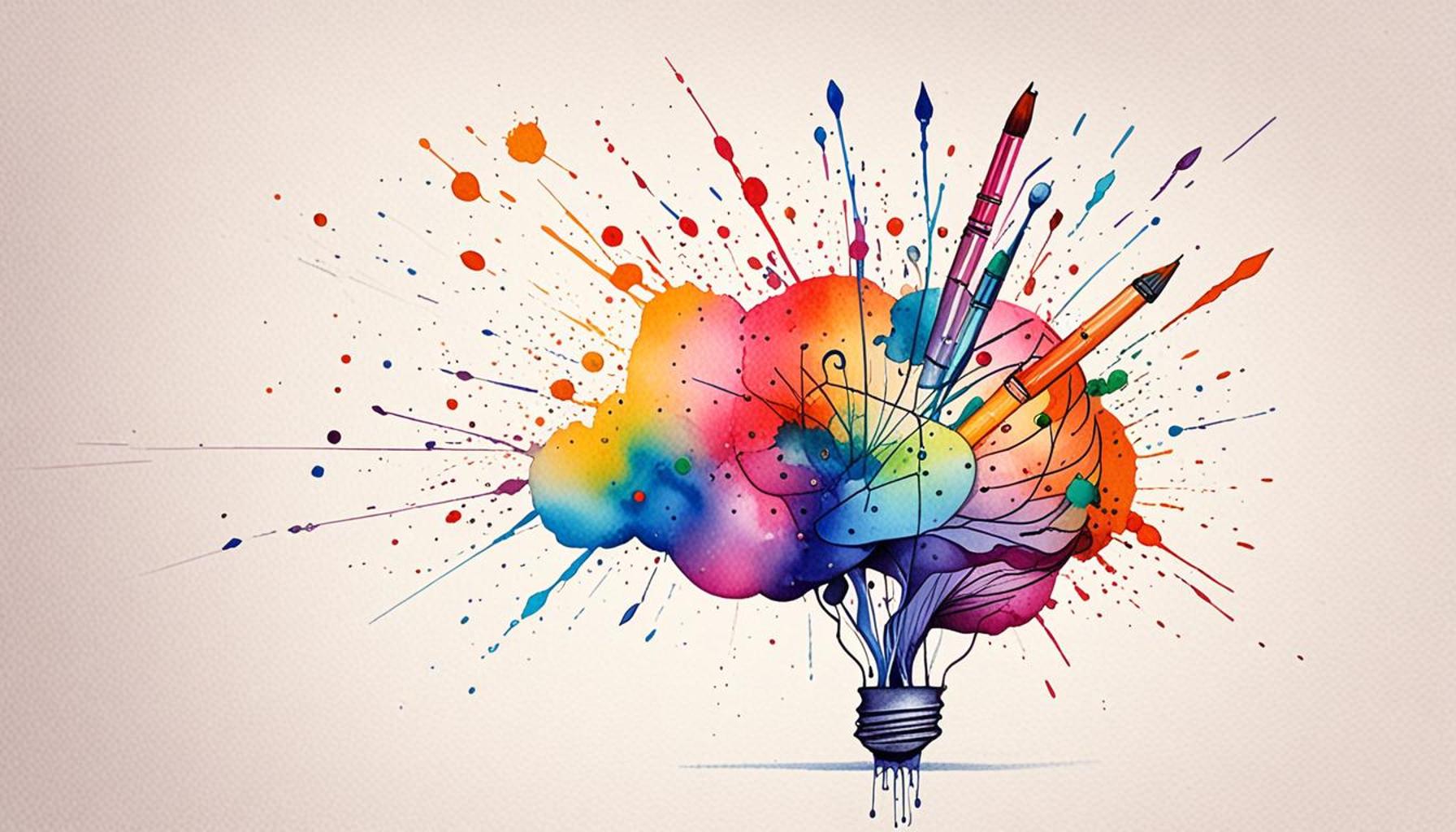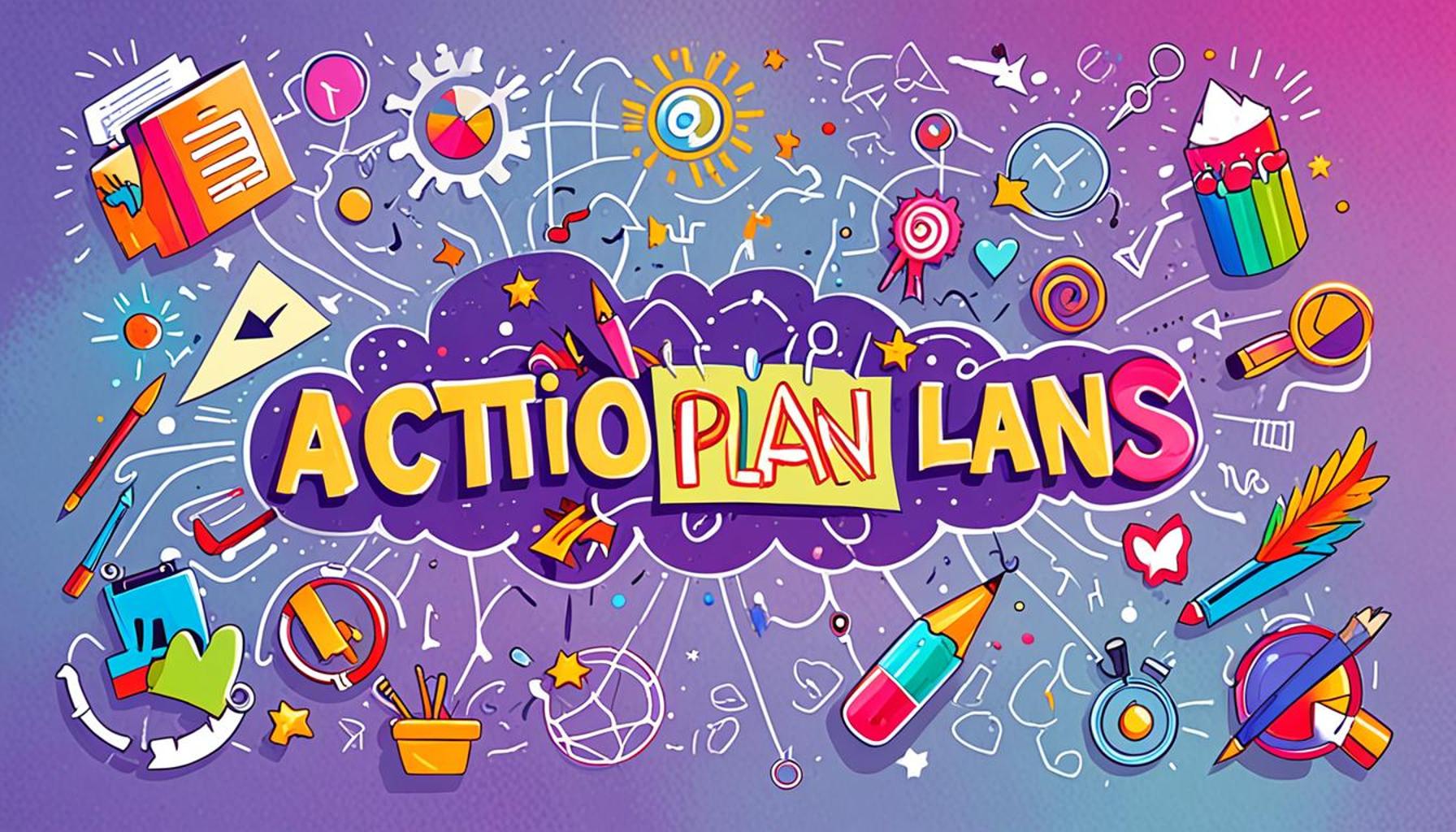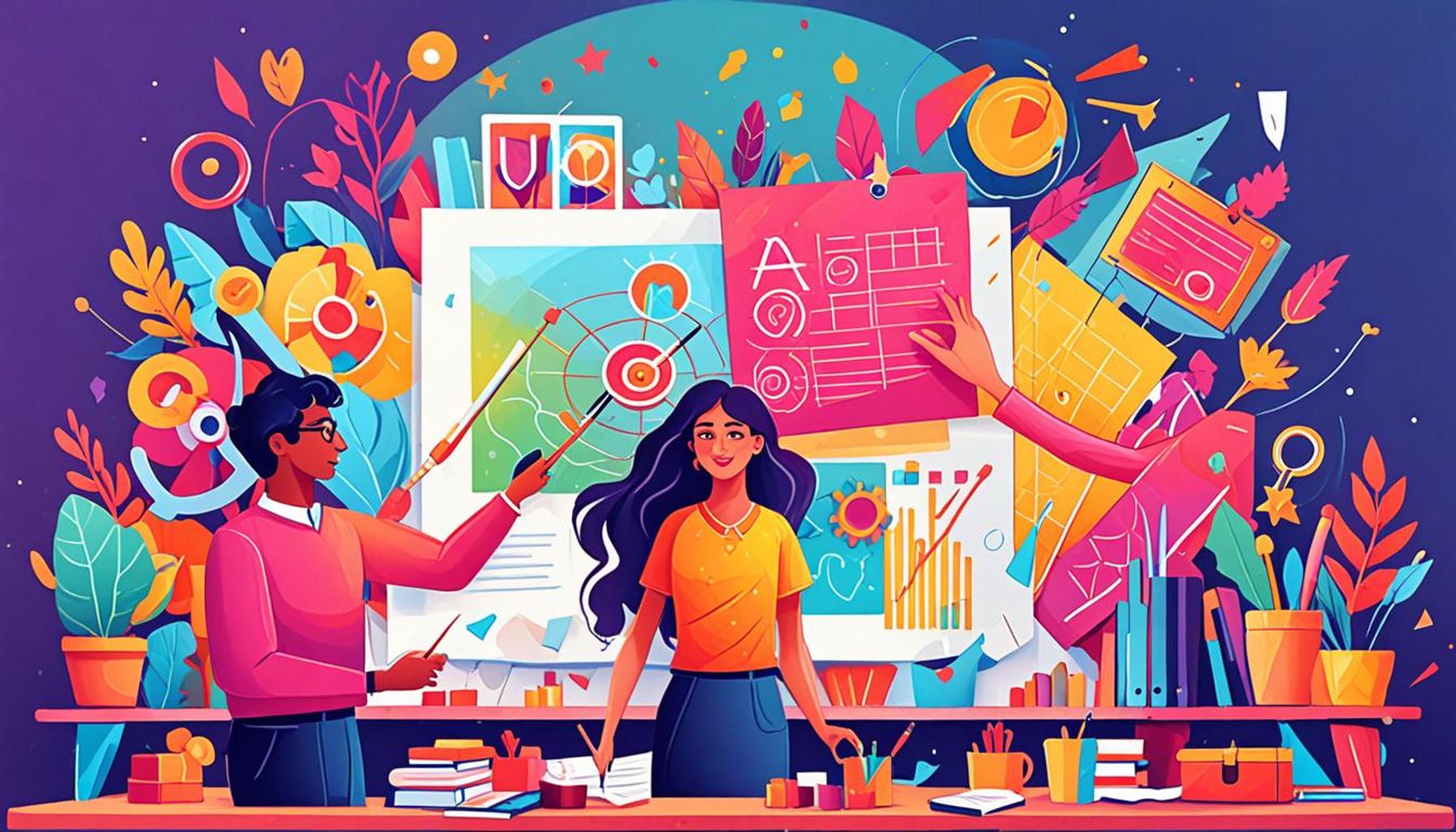Continuous Learning Unlocking Innovation and Driving Success

Introduction
In today’s ever-evolving landscape, continuous learning has emerged as a crucial driver of innovation and success. As industries and technologies transform at an unprecedented pace, the ability to adapt and thrive hinges on a commitment to acquiring new knowledge and skills. This need for ongoing education is not limited to individual growth; it also extends to the broader organizational level. Companies that invest in learning often find themselves on the cutting edge of industry advancements.
The relationship between continuous learning and innovation is profound. Organizations that prioritize knowledge acquisition are more likely to cultivate an environment ripe for creative problem-solving and groundbreaking ideas. This mindset encourages teams to challenge the status quo and explore uncharted territories. For instance, tech giants like Google and Amazon have internal programs promoting learning, which directly contribute to their innovative products and services. Encouraging employees to engage in workshops, online courses, and collaborative projects can significantly amplify a company’s creative capacity.
Consider this: a firm that embraces learning remains agile, ready to pivot when new technologies emerge, whilst those that don’t may find themselves stuck in the past. The fast-paced world demands adaptability, and through knowledge acquisition, organizations can not only keep up but lead the way. Enhancing skills is no longer an optional luxury but a necessity for survival and growth in the business world.
As we delve into the Top 5 essential aspects linking continuous learning with innovation, prepare to uncover valuable insights and strategies that can reshape your approach to professional development and organizational culture. These insights will guide you in fostering a workspace that not only adapts to change but is at the forefront of creating it.
ADDITIONAL INSIGHTS: Expand your understanding here

Top 5: Continuous Learning and Its Relationship with Innovation
In today’s rapidly evolving world, continuous learning serves as a vital engine driving innovation. Industries are in a constant state of flux due to emerging technologies and shifting market dynamics. Consequently, the ability to adapt and acquire new knowledge is not just beneficial; it is essential for survival and success. This ranking explores the impact and significance of continuous learning in fostering innovation, revealing how these two concepts are intricately entwined. Let’s delve deeply into the top five aspects that highlight this interconnected relationship.
5. Building a Growth Mindset
The cornerstone of continuous learning is the development of a growth mindset. This term, popularized by psychologist Carol Dweck, underscores the idea that intelligence and abilities are not fixed but can evolve with effort and dedication. Individuals with a growth mindset perceive challenges as potential pathways for improvement rather than insurmountable hurdles.
In relation to innovation, a growth mindset creates an environment ripe for experimentation and risk-taking. Teams or organizations that foster such a mentality tend to produce innovative ideas without the fear of failure acting as a deterrent. This type of environment encourages a culture where employees strive for improvement, which lays the groundwork for groundbreaking innovations.
- Increased Resilience: The ability to overcome setbacks cultivates persistence, a crucial component for those committed to pursuing innovative ideas.
- Greater Collaboration: When people aren’t afraid to share outlandish ideas, teamwork becomes a breeding ground for invention, fusing diverse perspectives into unified innovations.
- Embracing Feedback: Handling constructive criticism with maturity accelerates not just personal but organizational growth, propelling innovative thinking.
4. Expanding Knowledge Through Diverse Learning Sources
Continuous learning thrives when individuals actively seek diverse knowledge sources. Whether it’s through books, online courses, podcasts, or seminars, consuming information from a spectrum of channels broadens one’s viewpoint and equips them with a multifaceted understanding of the world. The breadth of this knowledge is essential for innovation, as it expands the reservoir of ideas and insights available for tackling complex problems.
Organizations play a pivotal role in this aspect. By fostering a culture where employees are motivated to delve into different disciplines and methodologies, they indirectly enhance their problem-solving skills. This broad nurturing of intellectual curiosity often leads to unexpected intersections, sparking innovative solutions that are both practical and revolutionary.
- Interdisciplinary Approaches: Melding ideas from disparate fields can ignite revolutionary innovations that single-discipline viewpoints could overlook.
- Continual Skill Enhancement: Regular skill updates ensure readiness for unforeseen challenges and shifts in the industry.
- Global Perspectives: Exposure to international paradigms broadens understanding, enabling innovations that cater to varied global markets.
3. Leveraging Technology for Continuous Learning
Technological advancements have revolutionized how individuals access and interact with learning materials. The rise of e-learning platforms, mobile applications, and interactive educational tools has provided unprecedented access to vast repositories of knowledge. This technological empowerment doesn’t just democratize learning; it plays a crucial role in fostering innovation.
For instance, organizations can utilize Learning Management Systems (LMS) to craft personalized, trackable learning journeys for their employees. By embedding technology into the continuous learning paradigm, companies enhance individual skill sets while simultaneously nurturing an innovative culture where new methodologies and practices are readily embraced.
- Personalized Learning Experiences: Adaptive platforms cater to individual learning paces and styles, fostering deeper comprehension and engagement.
- Real-Time Updates: Staying abreast of industry trends and advancements through regular, tech-enabled learning equips individuals to act swiftly on new insights.
- Collaboration Tools: Digital platforms facilitate seamless knowledge sharing and collaboration, which is pivotal for driving innovative team projects.
2. Encouraging a Culture of Experimentation
An important facet of continuous learning is fostering a culture of experimentation. In such a culture, organizations promote the idea of testing hypotheses and trying new ideas, free from the threat of judgment or negative repercussions. This mindset is essential for innovation, as it leads to pilot projects that can be iterated upon and improved to become successful initiatives.
By creating an environment where employees feel safe to explore their ideas, organizations signal their commitment to learning and growth. This empowers individuals while simultaneously cultivating a collective mindset that is driven towards innovation. In this environment, failing is not stigmatized; rather, it is viewed as a moment to gather insights and refine original concepts.
- Informed Risk-Taking: Consciously weighing risks against potential rewards in a supportive environment can lead to groundbreaking discoveries.
- Learning from Iterations: Each experiment offers valuable lessons that can inform and improve subsequent initiatives, continuously honing the innovation process.
- Fostering Curiosity: Proactively encouraging exploration drives individuals to uncover and develop creative solutions.
1. The Synergy: Continuous Learning and Innovation
At the core of this discussion lies the synergy between continuous learning and innovation. When learning becomes a central pursuit within organizations, innovation thrives. This cycle is self-sustaining; as individuals accrue new knowledge and develop fresh skills, they are increasingly equipped to devise innovative solutions that defy conventional limitations.
This synergy unfolds in numerous forms, such as agile methodologies that prioritize continuous feedback and iteration, or decentralized models that empower frontline employees to make decisions. Organizations that prioritize learning are not just adapting to changes but are often spearheading new trends, setting the stage for future innovations.
Ultimately, the partnership between continuous learning and innovation is not merely beneficial—it is transformative. Organizations that recognize and cultivate this relationship position themselves at the forefront of their industries, paving the way for innovations that shape the future landscape.
| Category | Description |
|---|---|
| Cultivating Creativity | Continuous learning nurtures creative problem-solving by exposing individuals to diverse perspectives and new ideas. |
| Adapting to Change | In a world characterized by rapid technological advancements, continuous learning equips professionals to stay relevant and agile, adapting their skills along with industry shifts. |
| Enhanced Collaboration | Lifelong learning fosters a culture of collaboration, where knowledge sharing leads to innovative solutions and teamwork across various fields. |
| Empowering Leadership | Leaders who prioritize continuous learning inspire their teams and create dynamic environments that stimulate innovation and growth. |
Continuous learning is not merely an individual pursuit; it is a key driver of innovation within organizations. By fostering a culture of ongoing education, companies can significantly increase their adaptability and responsiveness to market changes. When employees are encouraged to seek knowledge and refine their skills, they contribute to more innovative solutions. This constant quest for improvement allows teams to tackle challenges with fresh insights, enhancing the organization’s overall problem-solving capability.Moreover, the technological landscape continues to evolve at an unprecedented rate. As new tools and methodologies emerge, the professionals who engage in continuous learning are those who can proficiently utilize these advancements. This adaptability enables organizations to lead rather than follow in their respective industries, creating a competitive edge.Furthermore, continuous learning often results in enriched collaboration among employees. In settings where knowledge is freely shared and diverse ideas are valued, innovation flourishes. This collaboration can break down silos and lead to cross-disciplinary initiatives that spark unexpected breakthroughs. With a supportive learning environment, team members are more likely to leverage each other’s strengths and work together cohesively towards a common goal.Lastly, organizations led by individuals who champion continuous learning cultivate a thriving innovation ecosystem. Leaders who invest in the development of their teams not only enhance morale but also promote a mindset where inventive thinking is celebrated. This, in turn, sets a foundation where constant evolution becomes a part of the organizational culture, positioning businesses to thrive in an ever-changing landscape.
YOU MAY ALSO LIKE: Read this other article
Frequently Asked Questions about Continuous Learning and Its Relation to Innovation
What is the core relationship between continuous learning and innovation?
Continuous learning serves as the backbone for innovation. The process of acquiring new skills and knowledge opens doors to fresh perspectives, encouraging individuals and organizations to think creatively and devise novel solutions. By embracing lifelong learning, businesses can maintain a competitive edge, adapt to changes swiftly, and foster an environment where innovative ideas thrive.
How can continuous learning drive innovation in a corporate setting?
In a corporate environment, continuous learning encourages employees to step outside their comfort zones and embrace new challenges. This proactive stance leads to the development of cutting-edge skills and an innovative mindset. Companies that invest in regular training and skill development programs often experience higher levels of productivity and creativity, enabling them to introduce innovative products and services into the marketplace.
What barriers might hinder the connection between learning and innovation?
Several barriers can impede the relationship between learning and innovation, such as rigid organizational cultures, resistance to change, and lack of access to educational resources. Overcoming these hurdles requires fostering a culture that values and encourages learning and experimentation. Providing employees with opportunities for growth and creating an atmosphere where failure is viewed as a learning experience is crucial for nurturing innovation.
Can continuous learning contribute to sustainable innovation?
Yes, continuous learning can significantly contribute to sustainable innovation by ensuring that the knowledge and skills necessary for innovative processes are constantly updated and evolved. It ensures that organizations do not stagnate and are equipped to address future challenges. The ongoing process of learning not only supports the development of sustainable innovations but also aligns the organization with emerging trends and technologies.
What role does technology play in linking continuous learning to innovation?
Technology plays a pivotal role in bridging continuous learning with innovation. Through digital platforms and tools, individuals have access to a vast array of information and resources conducive to learning. Online courses, webinars, and collaborative tools facilitate knowledge sharing and skill enhancement, accelerating the innovation process. Moreover, technology enables organizations to quickly implement and iterate on new ideas, supporting a dynamic and innovative culture.
LEARN MORE: This related article may interest you
Conclusion of ‘Continuous Learning and its Relationship with Innovation’
In today’s rapidly evolving world, the symbiosis between continuous learning and innovation has become more critical than ever. As organizations and individuals strive to keep pace with technological advancements and changing market dynamics, the necessity for ongoing education becomes apparent. Through the integration of new knowledge and skills, both creative problem-solving and the development of groundbreaking ideas are fostered.
The Core Takeaways
- Adaptability: Continuous learning cultivates adaptability, enabling individuals to navigate through uncertain times and embrace new challenges with confidence.
- Creativity: By consistently engaging in learning, minds are opened to diverse perspectives, paving the way for inventive solutions and pioneering innovations.
- Growth Mindset: A commitment to lifelong learning fosters a growth mindset, encouraging individuals and organizations to view setbacks as opportunities for development rather than obstacles.
- Knowledge Sharing: The proliferation of knowledge through collaborative learning environments accelerates the innovation process by pooling diverse insights and ideas.
- Resilience: Continuous learning imbues resilience, empowering both individuals and enterprises to rebound from failures and persist in the face of adversity.
In reflecting upon these points, the importance of integrating a culture of continuous education within personal and professional realms becomes clear. As we enhance our understanding and capabilities, we not only improve our prospects but also enrich the innovative potential of our organizations and communities. Therefore, it is paramount that we cultivate a learning mindset that not only welcomes change but actively seeks it. By doing so, we not only secure our relevance in a fast-paced world but also contribute to a landscape ripe for creative breakthroughs and transformative growth.


